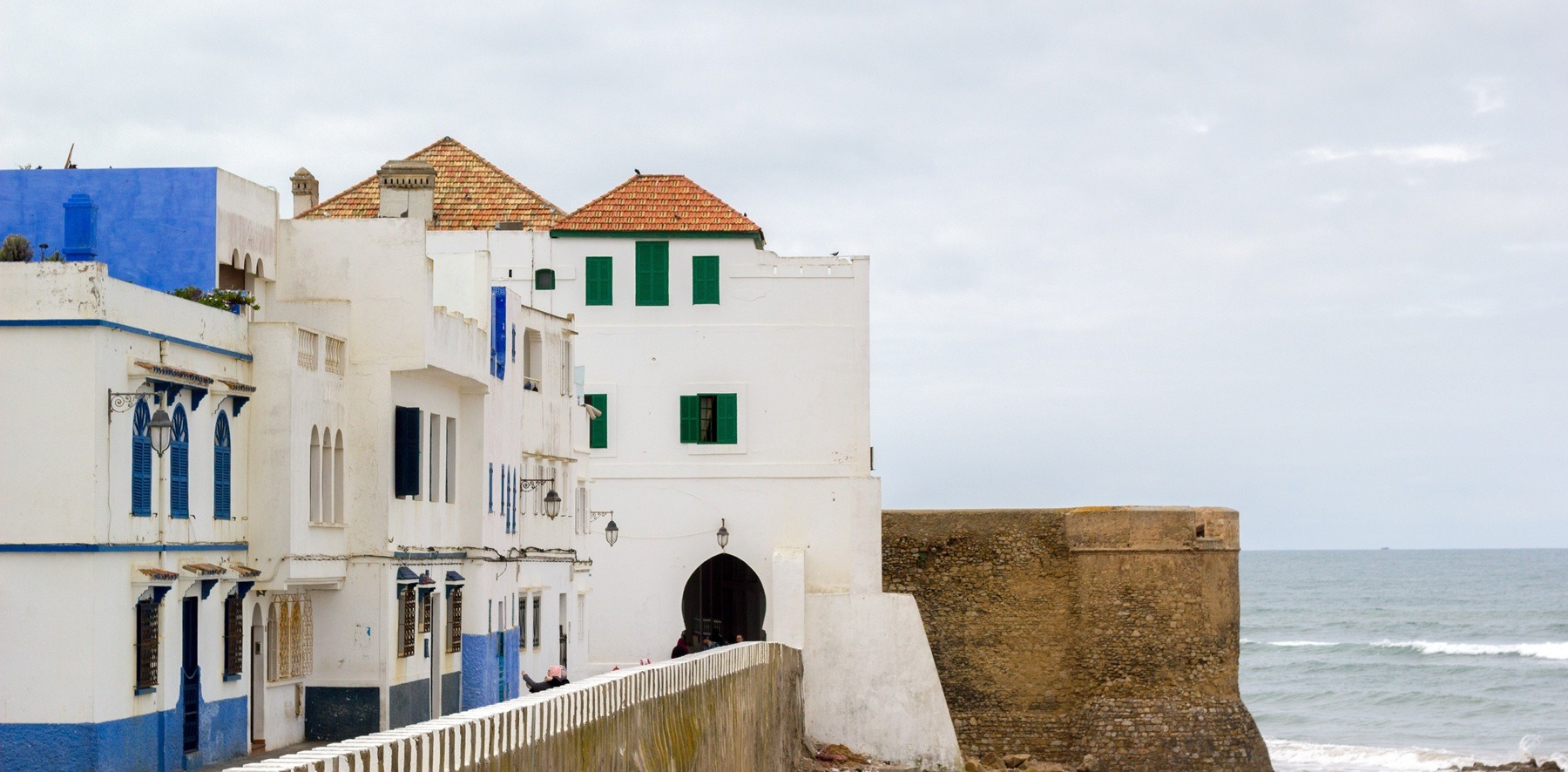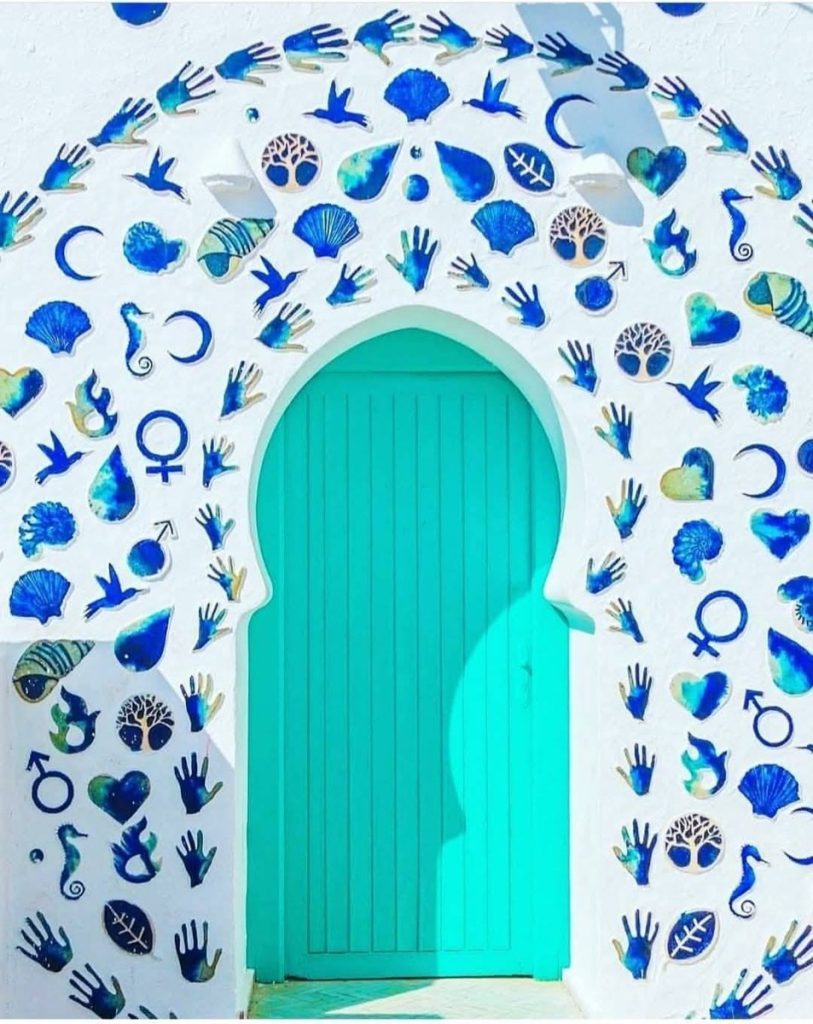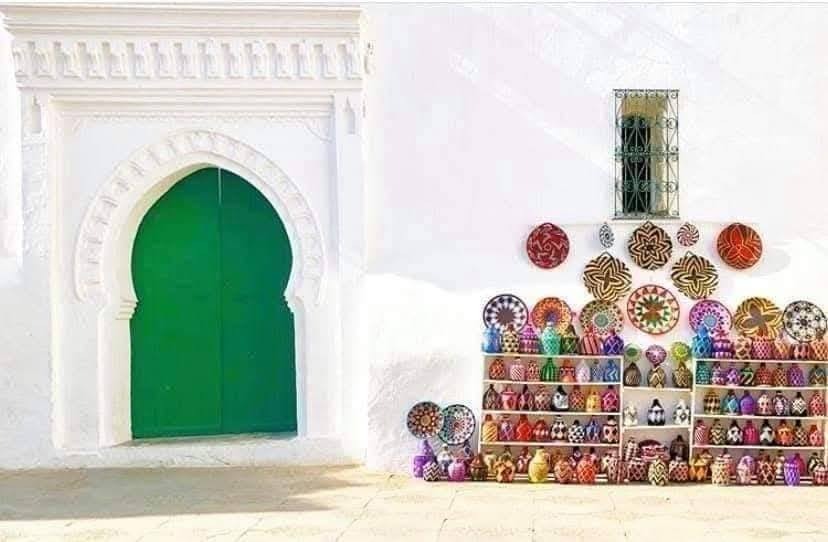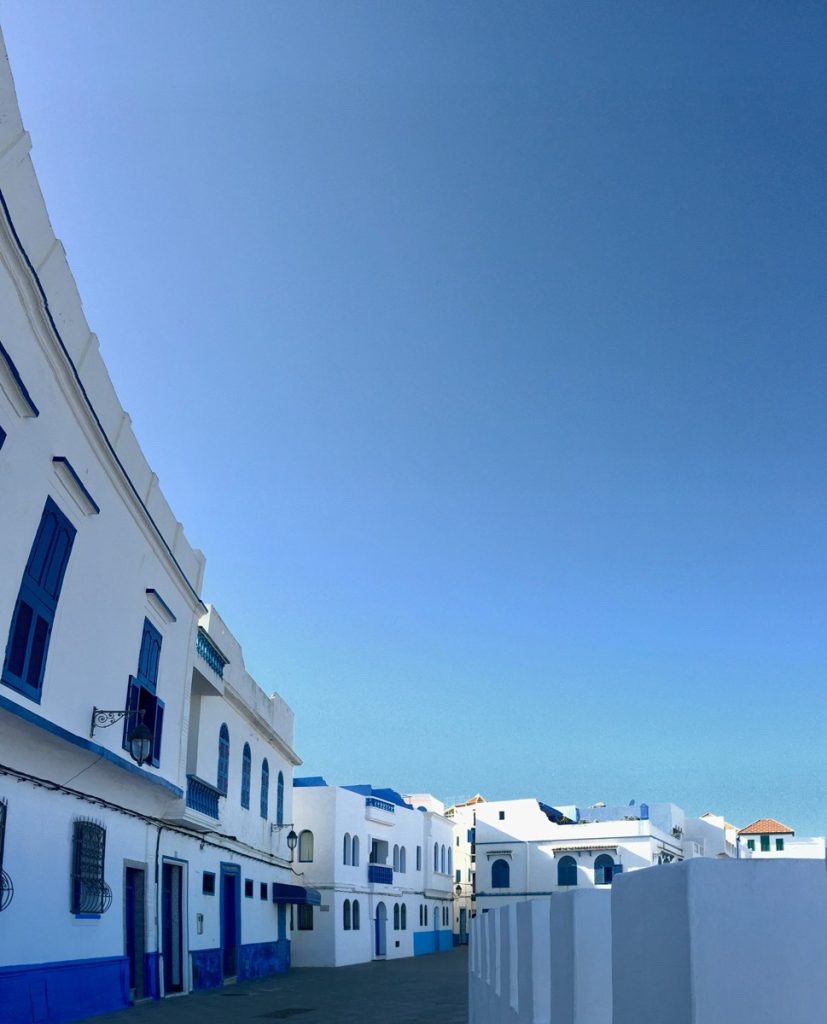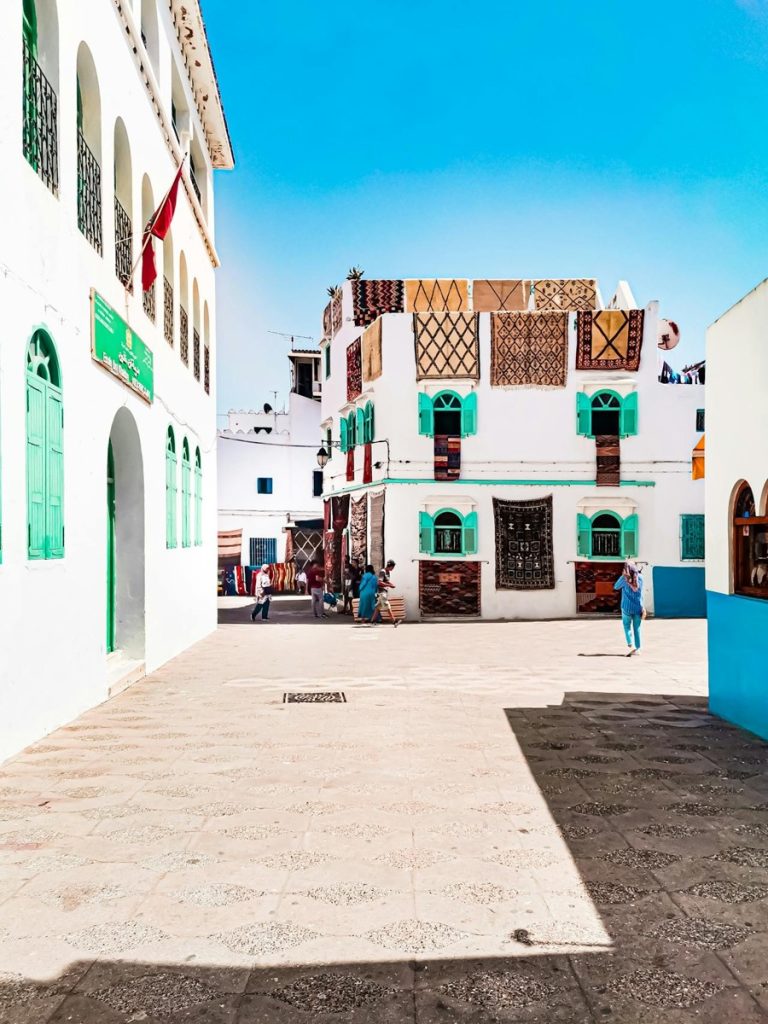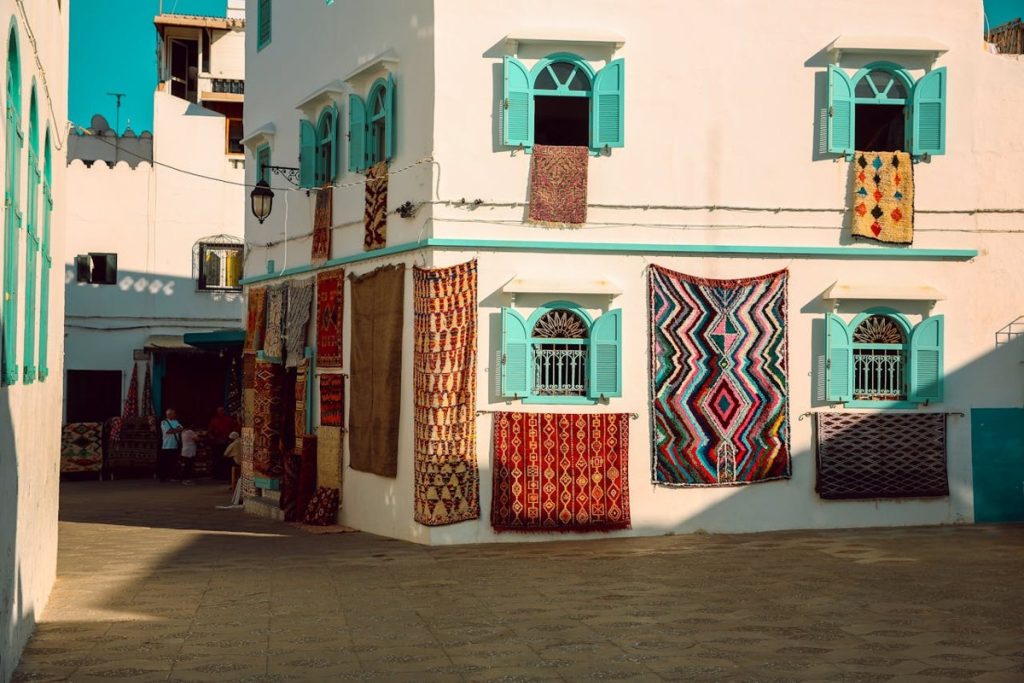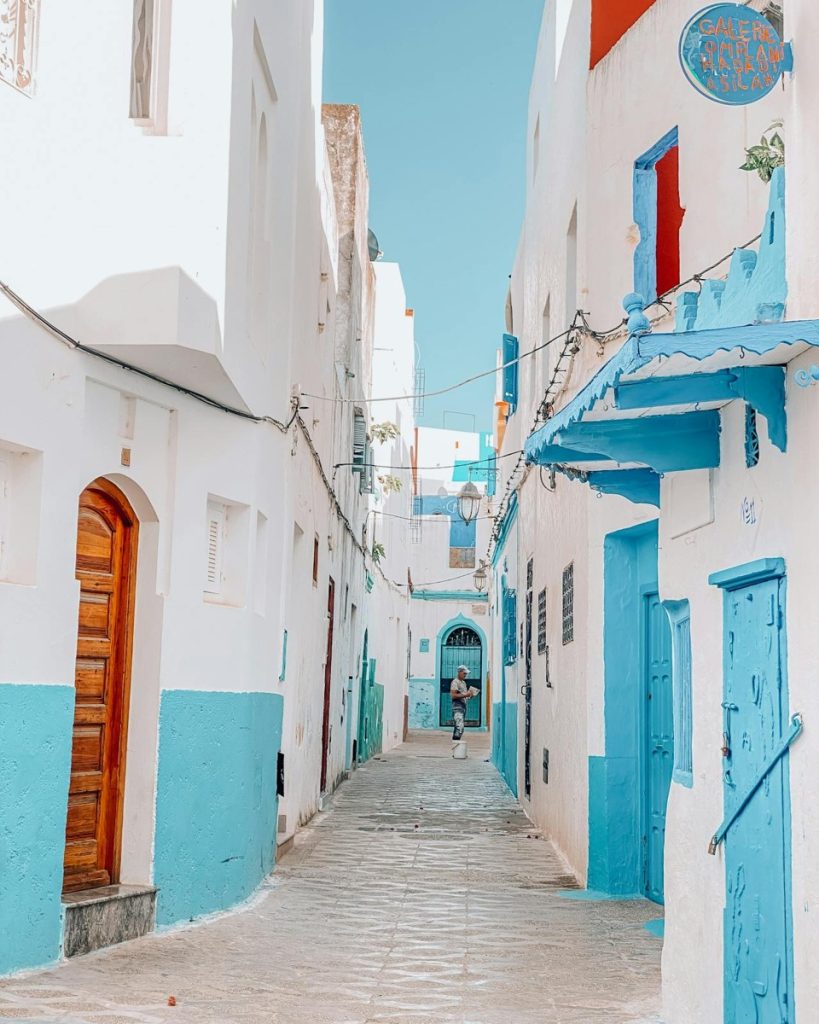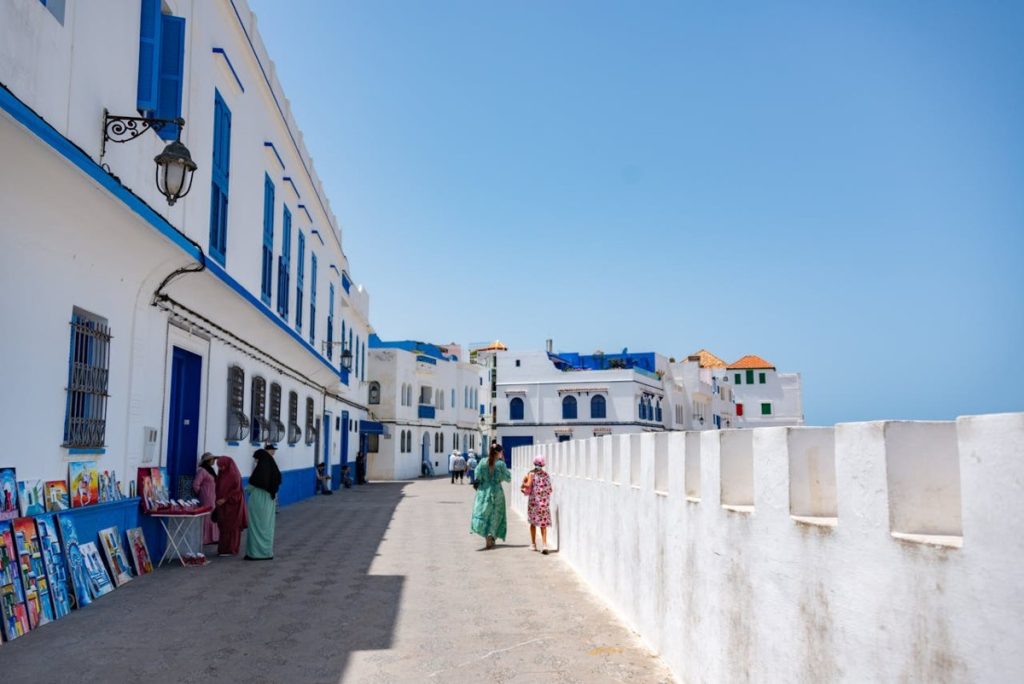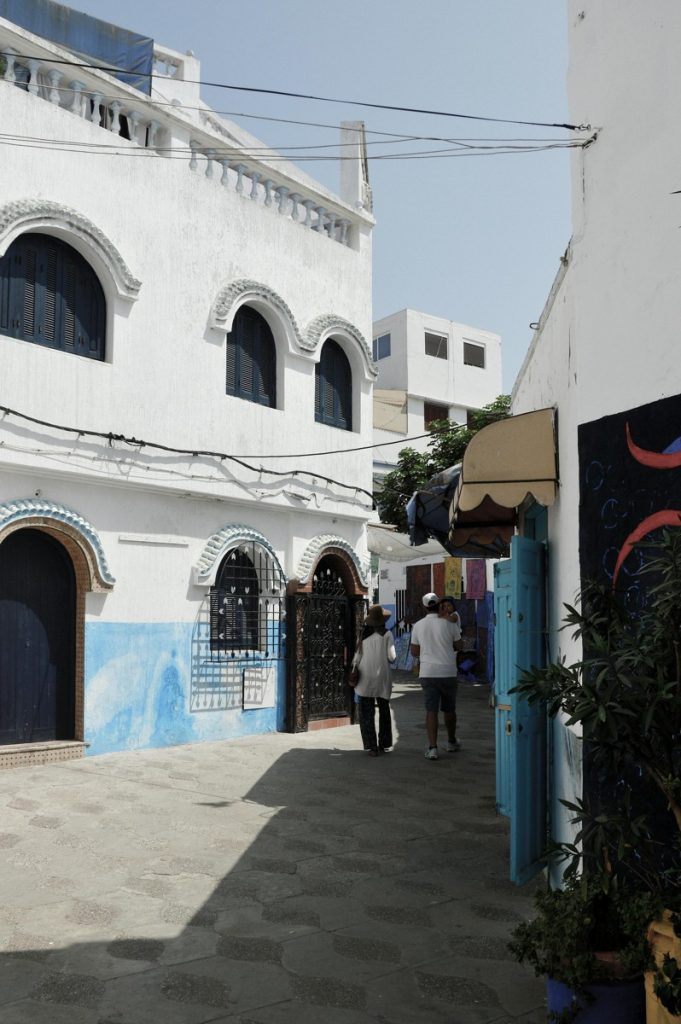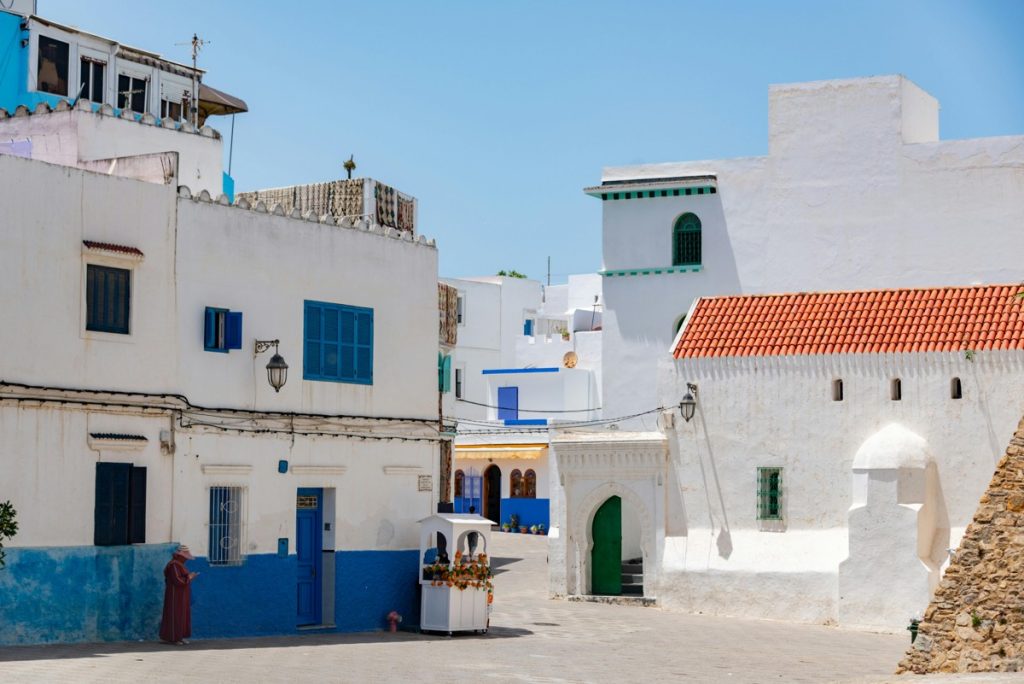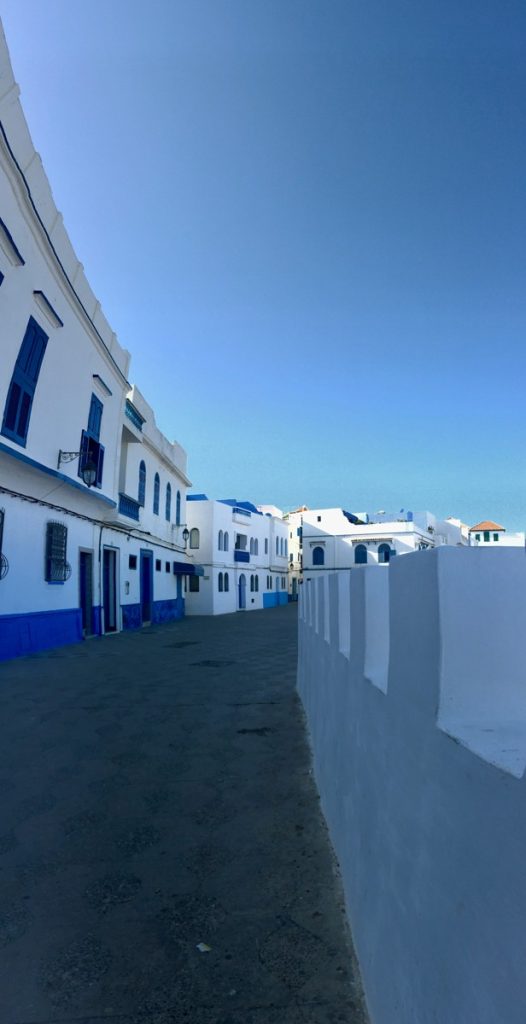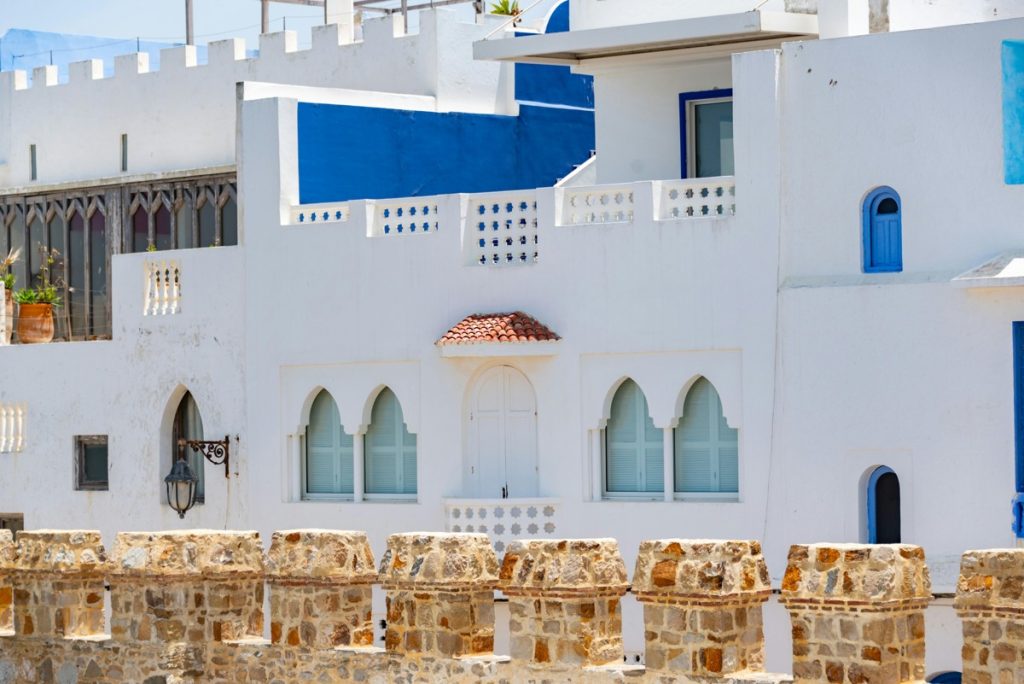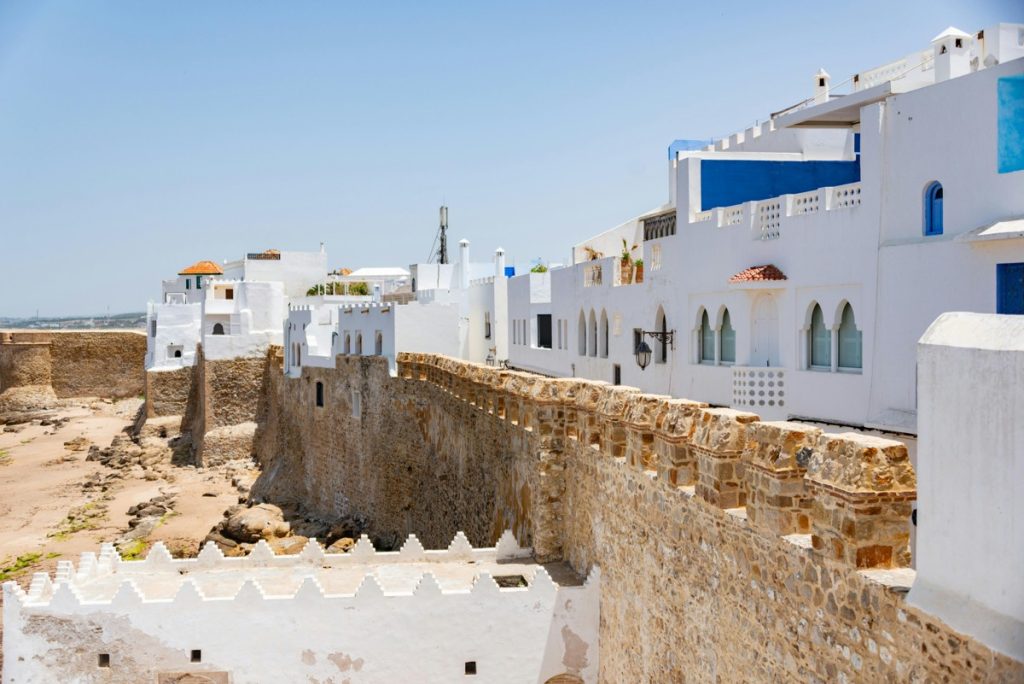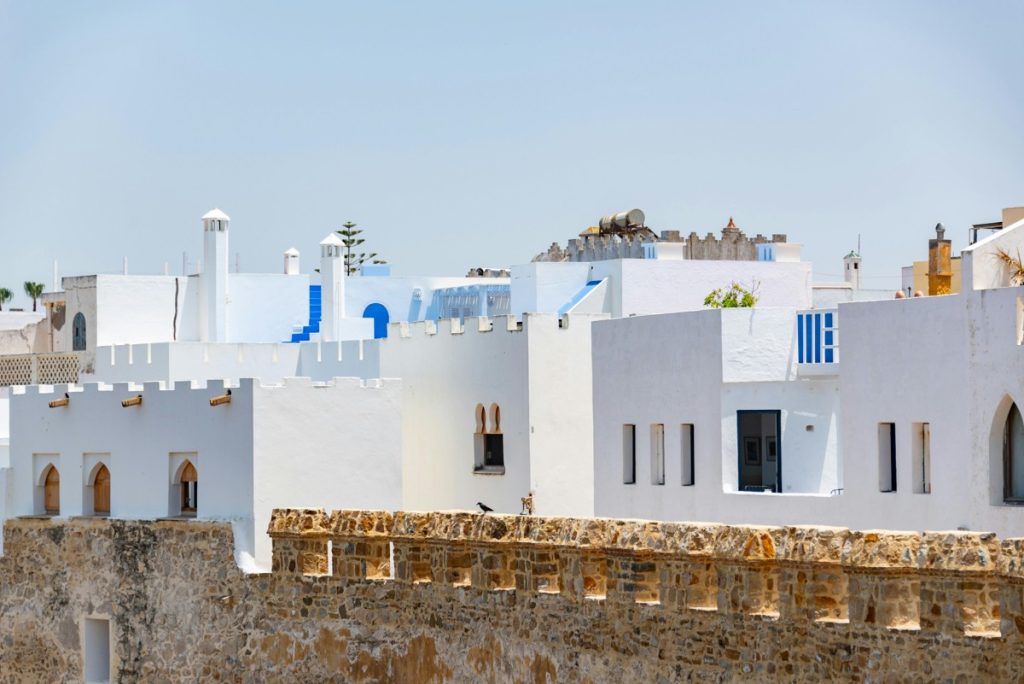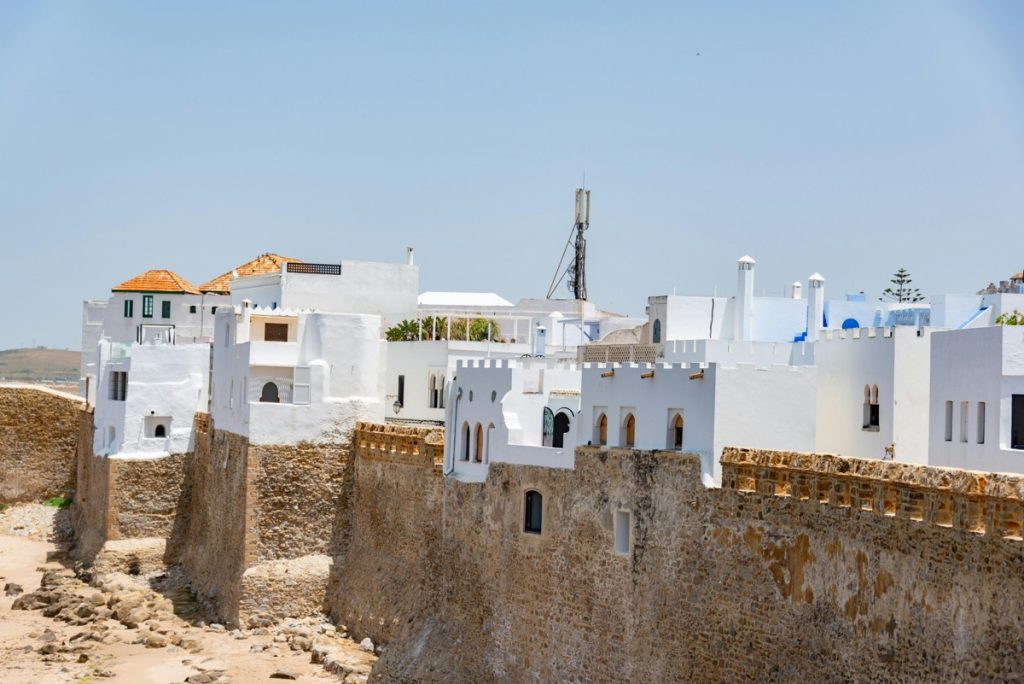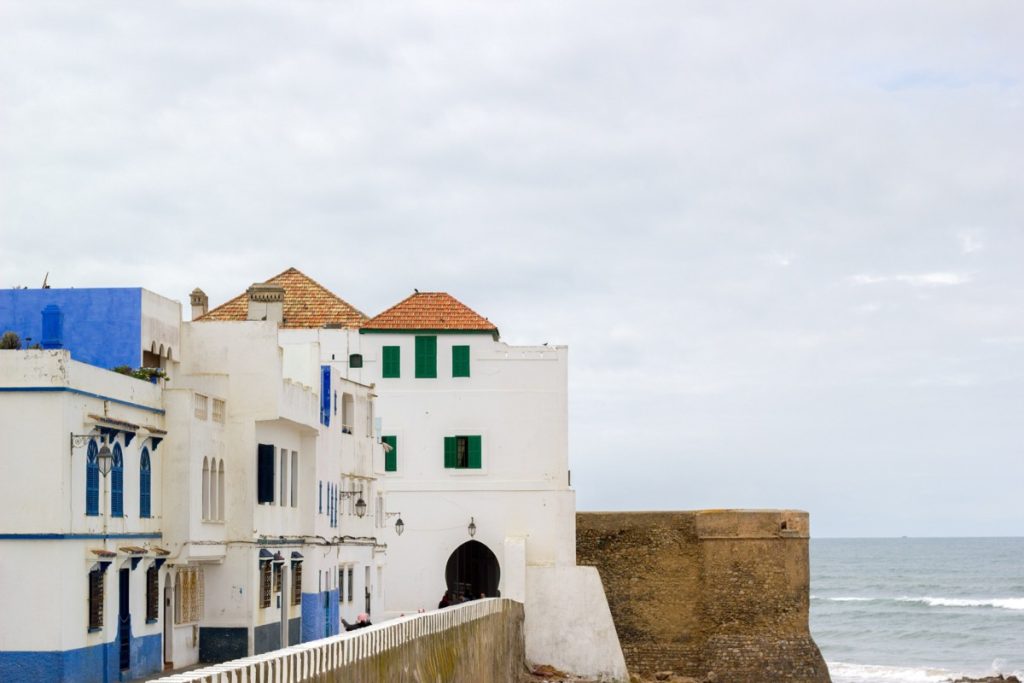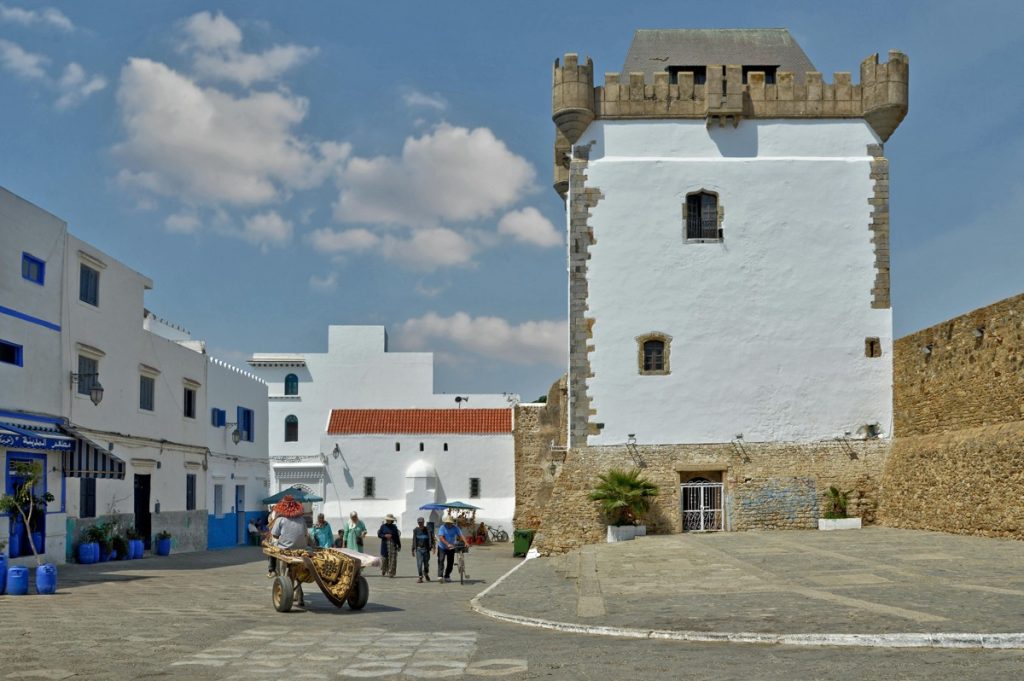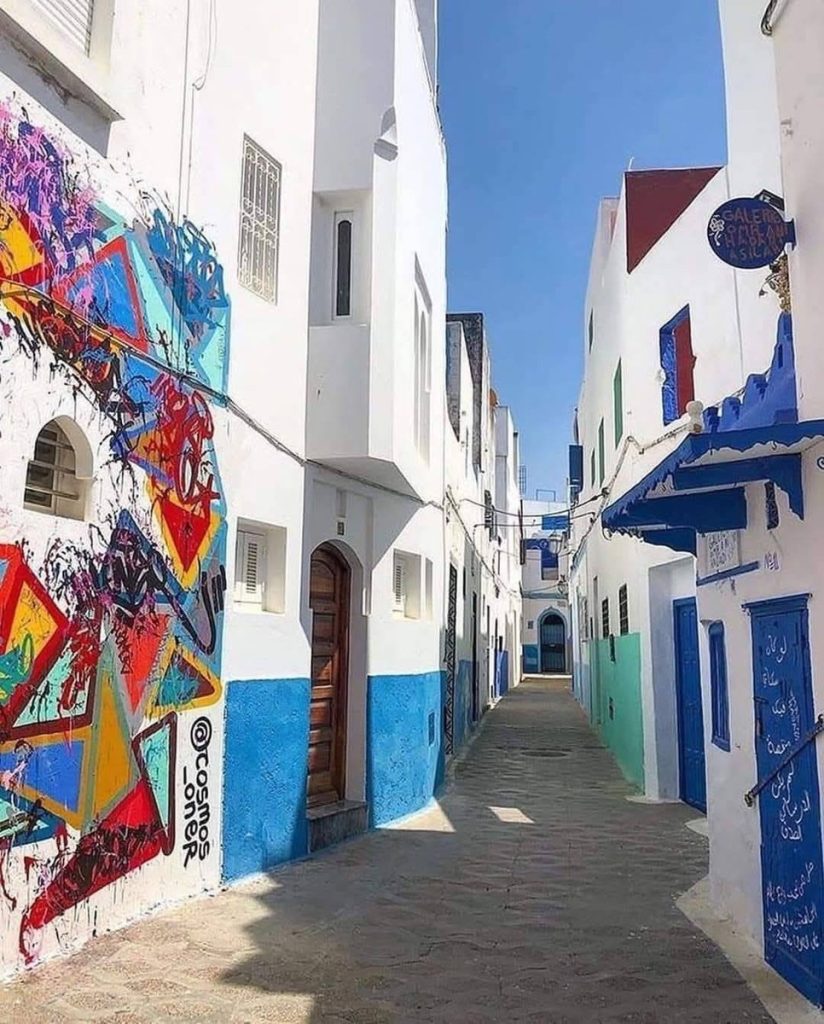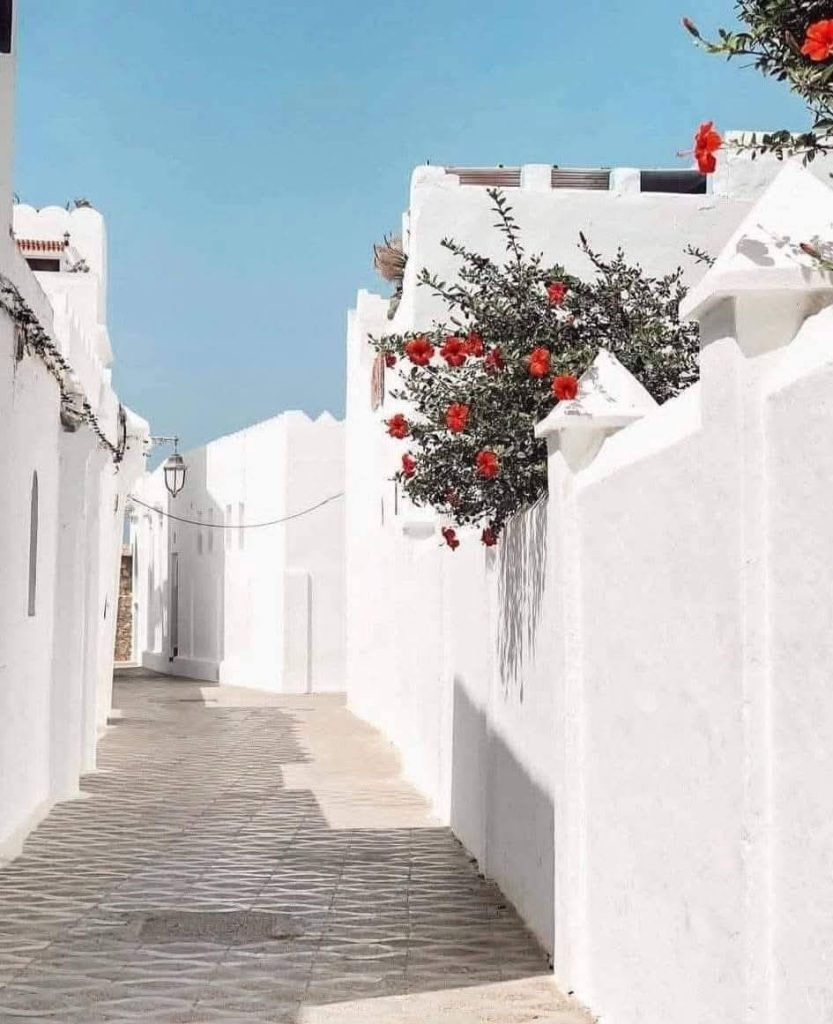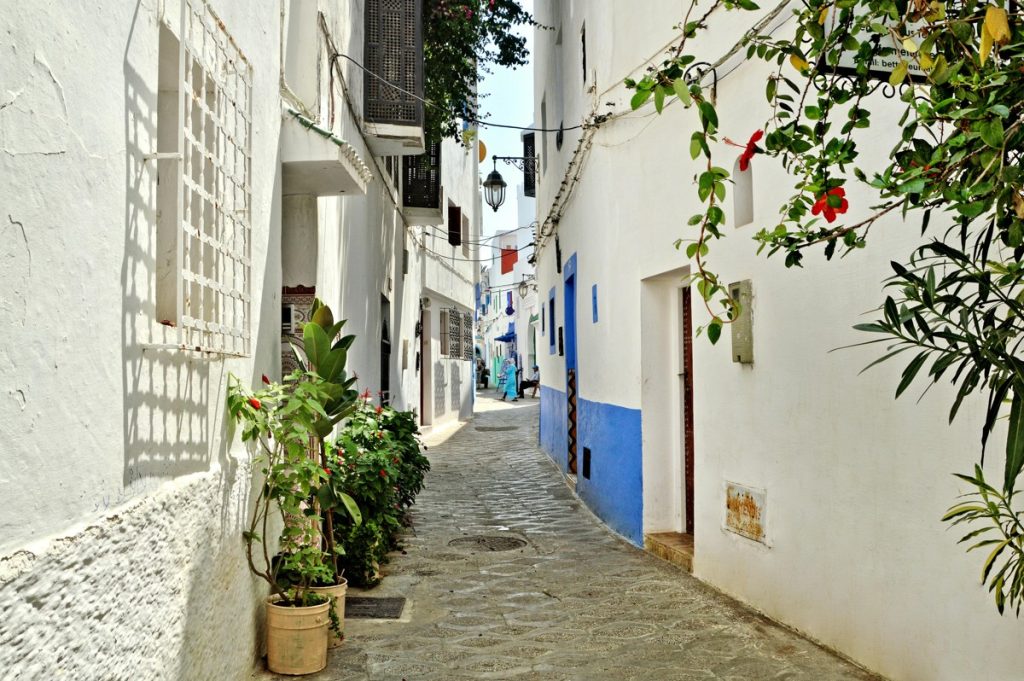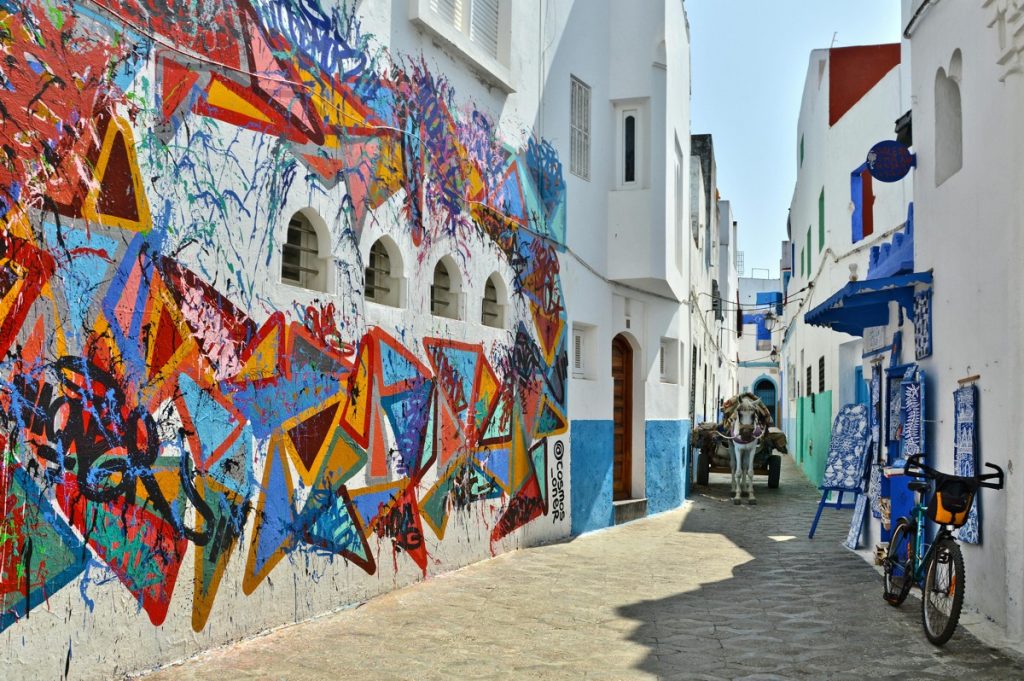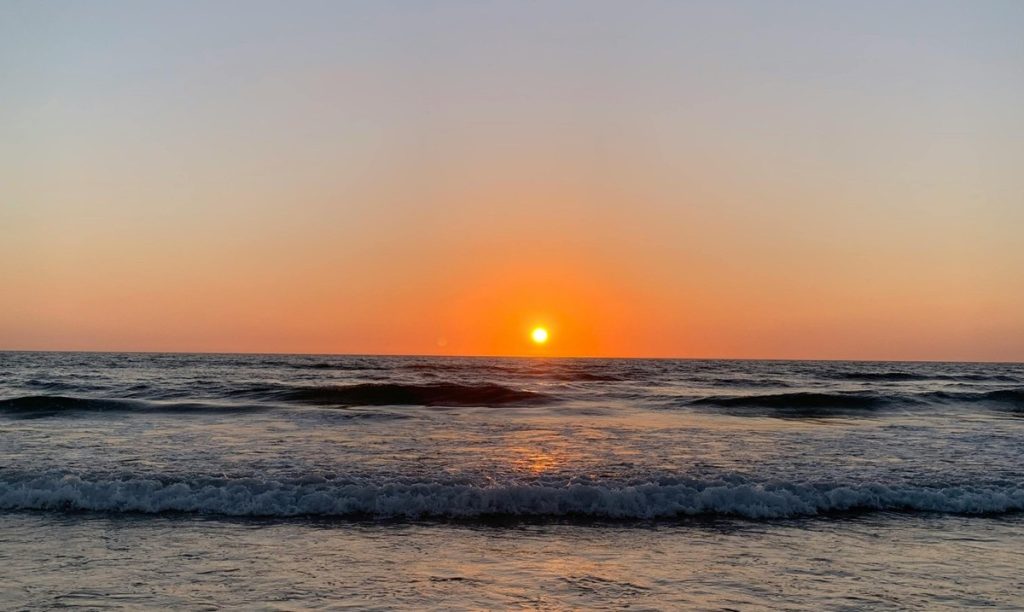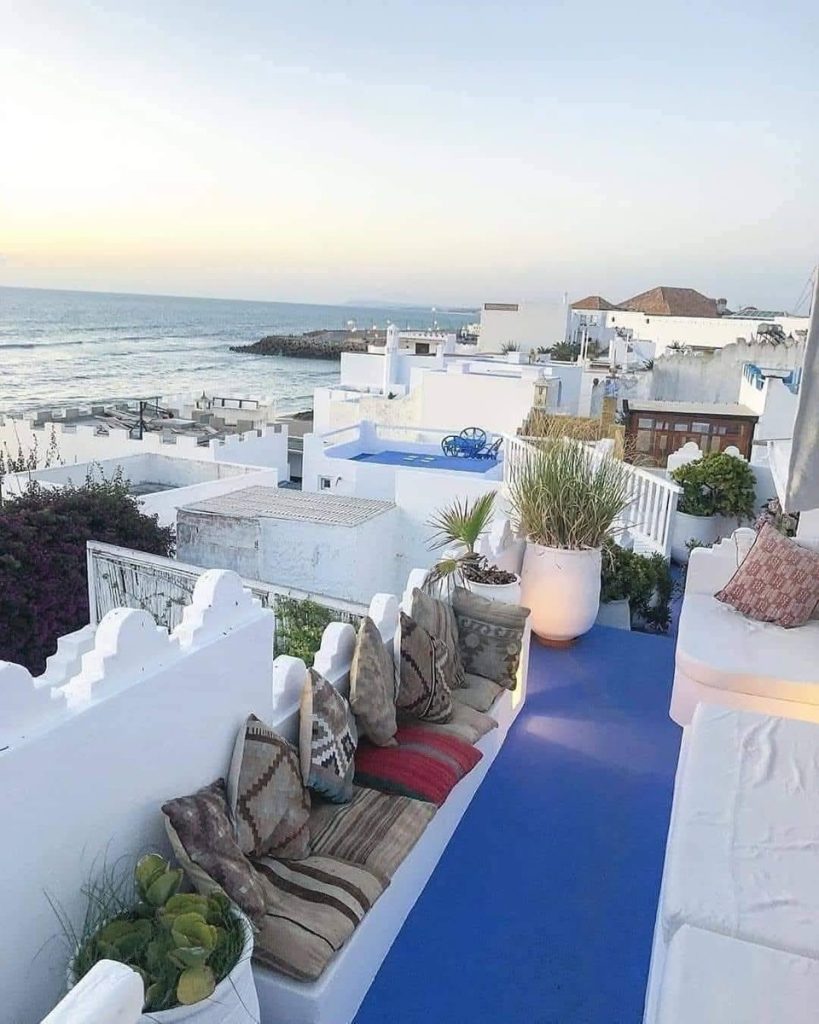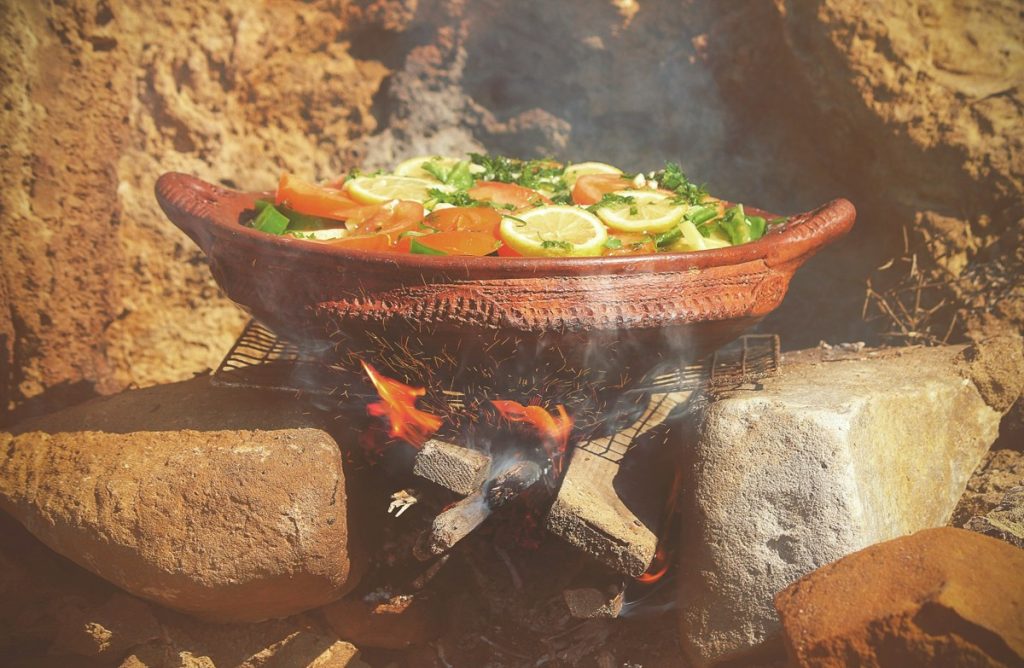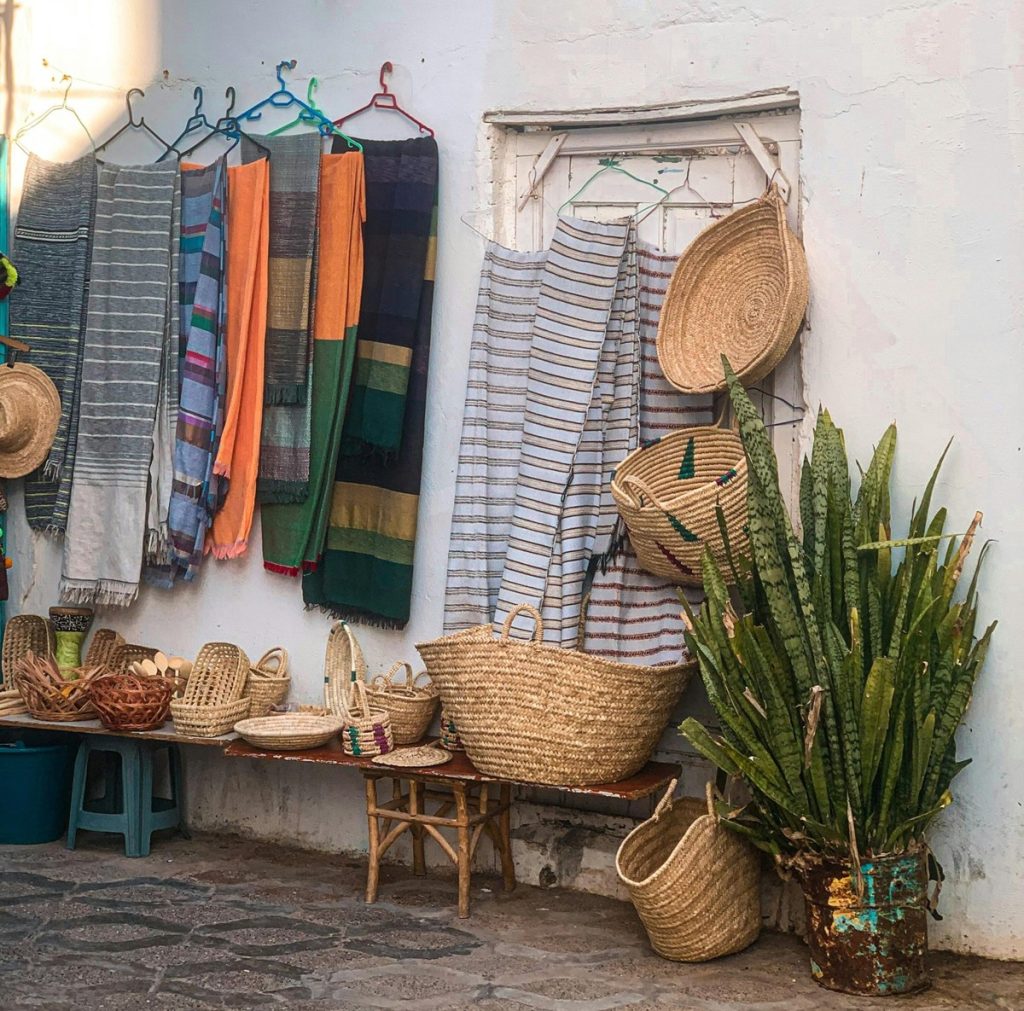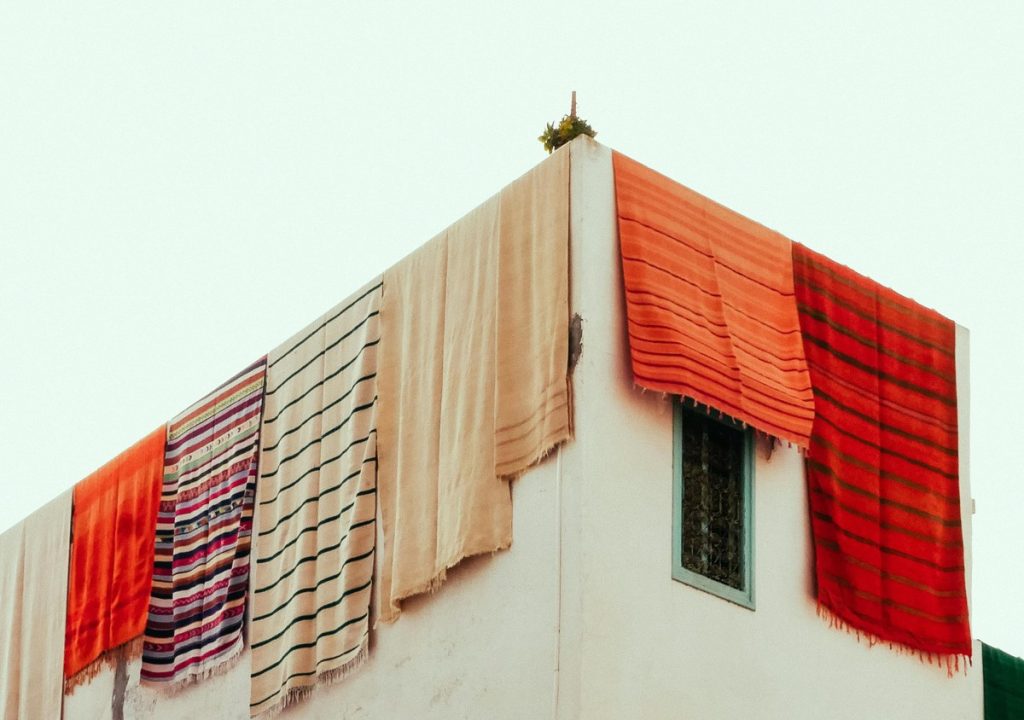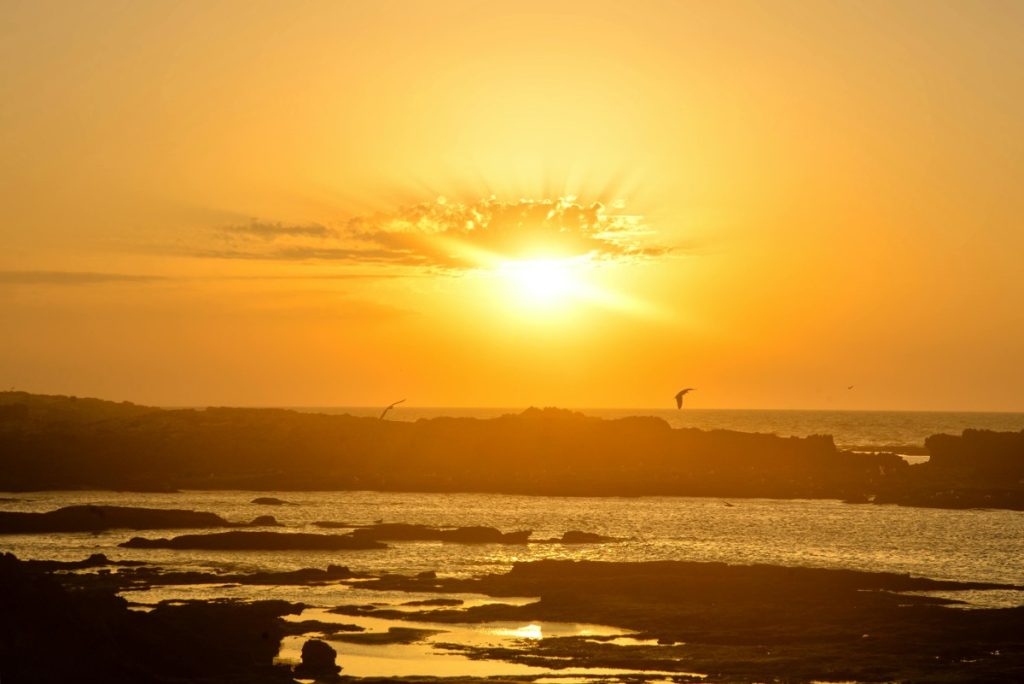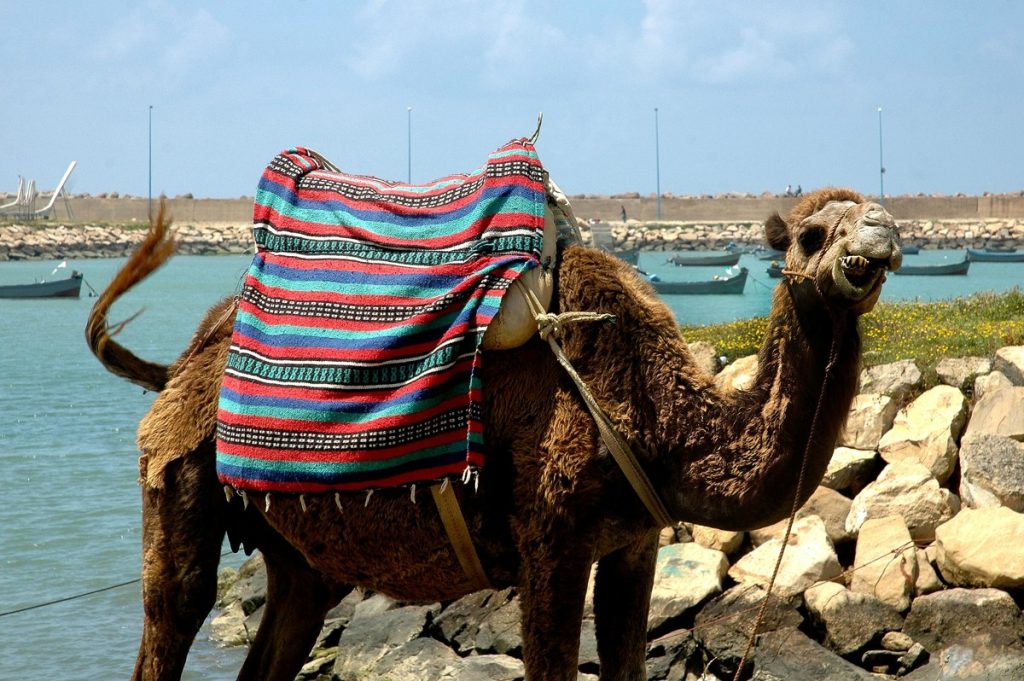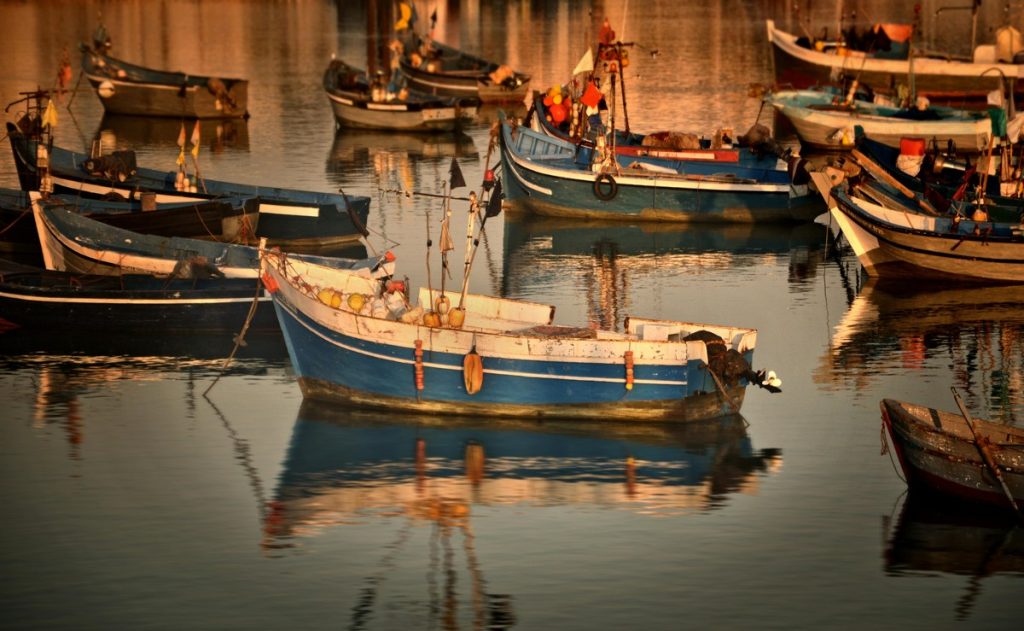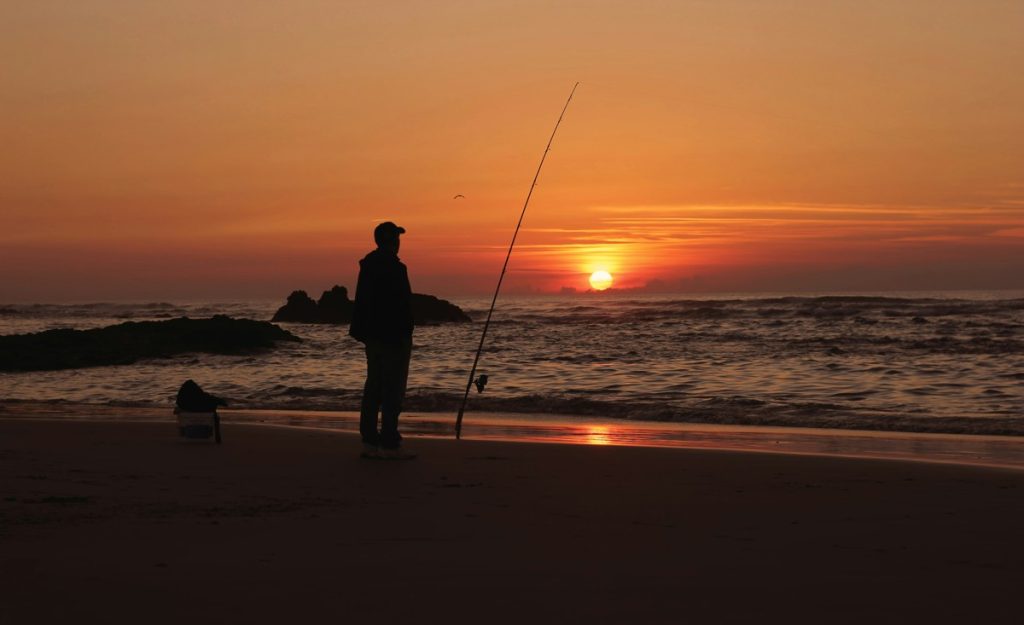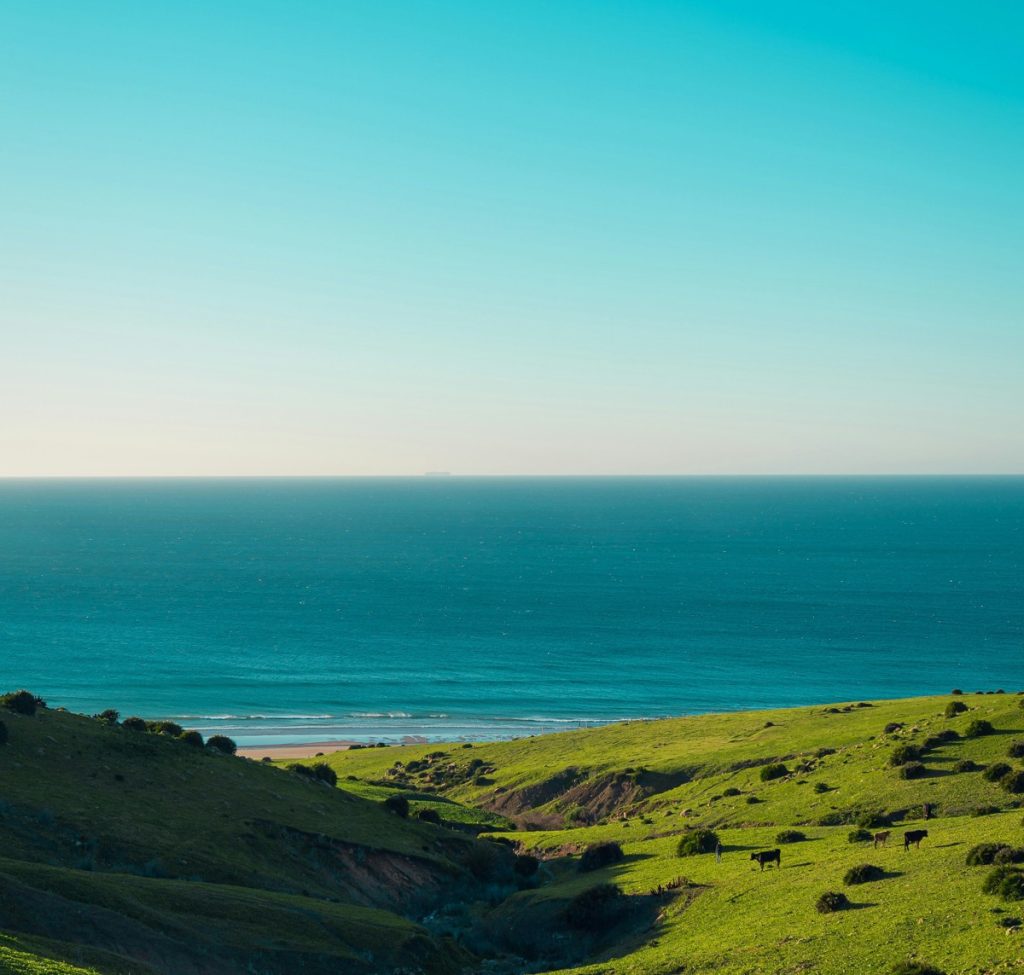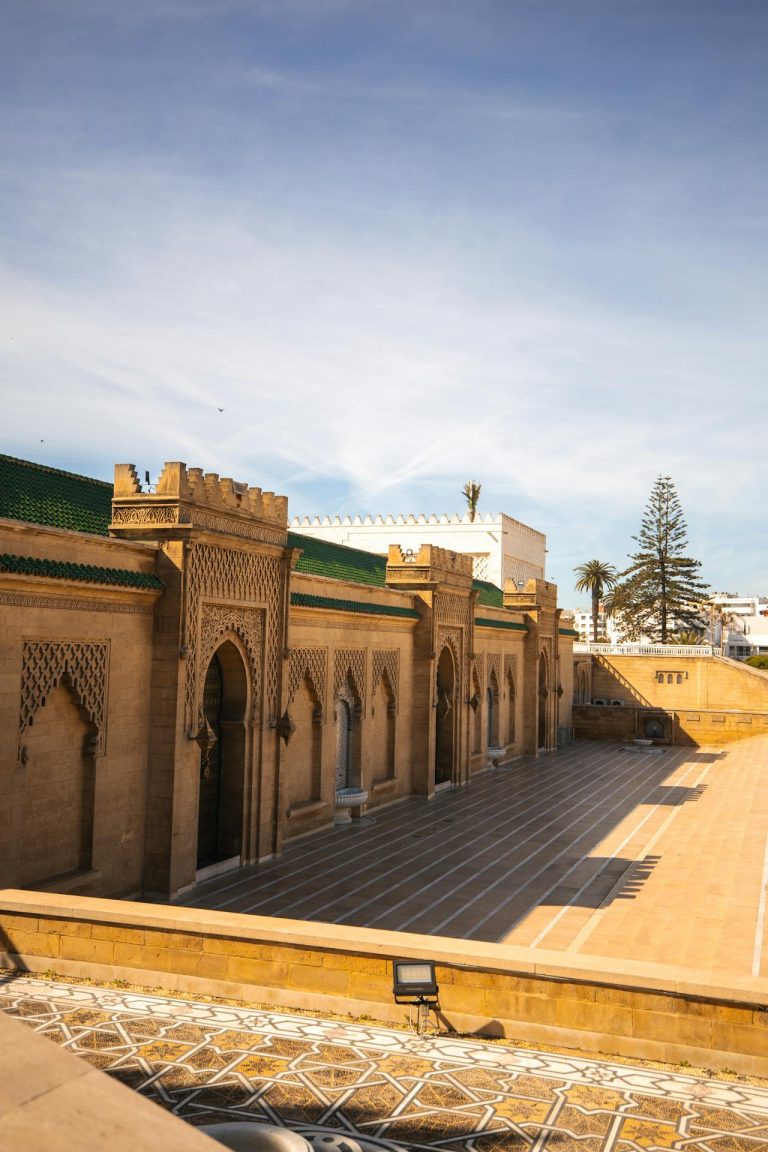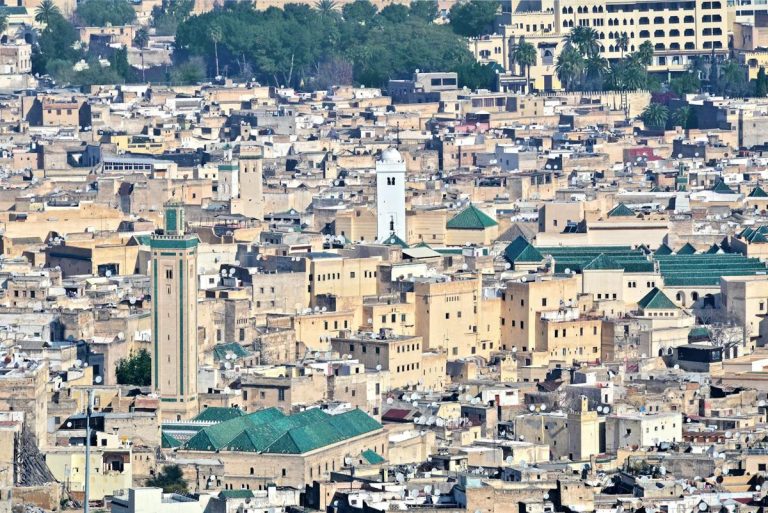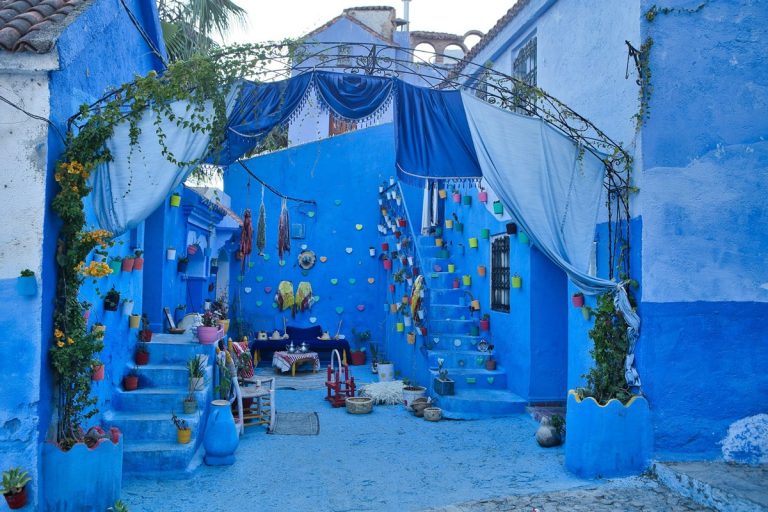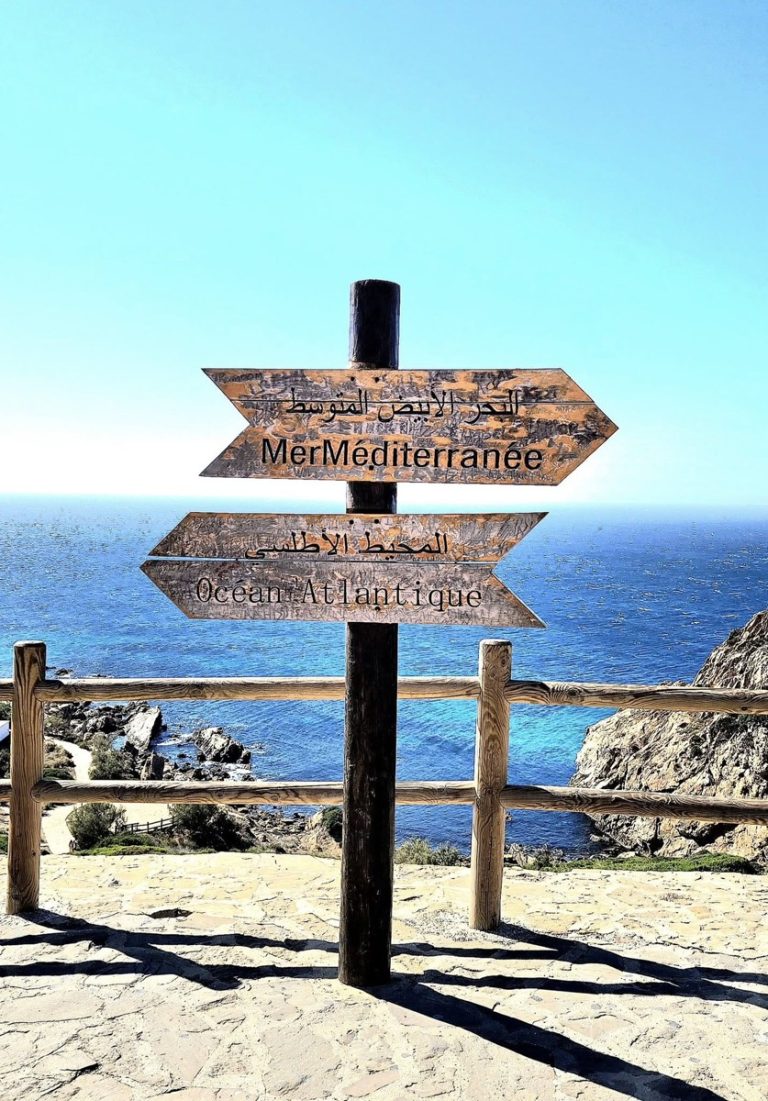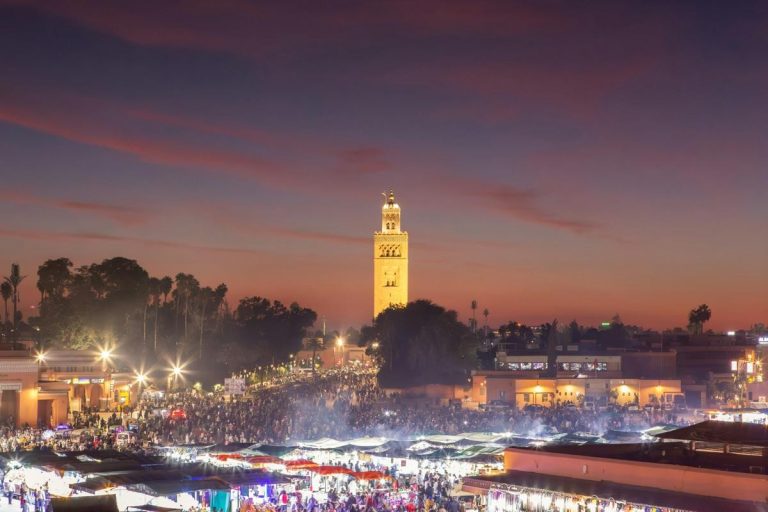Day Trip to Asilah: Discover Morocco’s Charming Coastal Escape
Day Trip to Asilah changed everything I thought I knew about Morocco’s coastal towns. You see, I’d spent years guiding travelers through the imperial cities and desert landscapes, but somehow this little fishing village kept slipping through the cracks of my itineraries—until an American couple I was working with insisted we make the journey. “Layla, everyone says it’s the best place in Morocco,” they told me with that bright-eyed enthusiasm that travelers get when they’ve stumbled onto something special. Best in Morocco? That seemed like a stretch. But standing there now, watching the Atlantic crash against Portuguese ramparts while street cats weave between murals of peacocks and spiraling patterns, I understood what they meant.
The thing about Asilah is that it doesn’t shout for your attention like Marrakech or even Tangier. It whispers. And if you’re willing to slow down—really slow down—it reveals itself in layers: the blue-washed medina walls, the numbered black cats painted in hidden corners, and the fishermen casting lines beside a Jewish cemetery that dates back generations. It’s intimate in a way that larger Moroccan cities simply can’t be anymore, and that’s precisely what makes it perfect for a day trip when you need to breathe.
Why Asilah Deserves Your Day
Look, I’ll be honest with you. When I first started exploring Asilah day trip from Tangier possibilities with clients, I worried there wouldn’t be enough to justify the journey. The medina is small—you can walk its perimeter in maybe thirty minutes if you’re rushing (though why would you?). But that’s exactly what makes this place work. You’re not here to check boxes off some exhaustive tourist list; you’re here to feel something.
The Portuguese built this fortress town back in the 15th century, and unlike so many historic sites that feel frozen in amber, Asilah actually lives and breathes. Residents still hang their laundry from medina windows, children attend the elementary school with its peacock murals splashed across the exterior walls, and fishermen still work the harbor at dawn just as they have for centuries. It’s functional history, not museum history, and there’s something deeply satisfying about that.
Plus—and I say this as someone who’s seen her share of Moroccan beaches—the Atlantic here hits differently. Maybe it’s the way the light bounces off those white and blue buildings, or how the sea breeze carries the scent of grilled sardines from the harbor. Whatever it is, Asilah possesses this Mediterranean vibe despite being firmly planted on Africa’s Atlantic coast. My architect husband jokes that the Portuguese left their DNA in the tilework, and honestly? He’s not wrong.
Planning Your Tangier to Asilah Day Trip: The Logistics Nobody Tells You
How to get to Asilah for a day trip? This is where I see travelers make their first mistake. They overthink it. The reality is beautifully simple: trains run regularly between Tangier and Asilah, the journey takes about 45 minutes, and you’ll spend maybe 30-40 dirhams (roughly $3-4) on a second-class ticket. The trains are clean and punctual by Moroccan standards—which means occasionally 10-15 minutes late but nothing dramatic—and offer lovely views of the coastline as you head south.
I usually catch the 9:00 AM departure from Tangier, which gets me into Asilah by mid-morning when the medina has woken up but hasn’t yet been overrun by the midday crowd. Not that “overrun” really applies here; even at its busiest, Asilah maintains this remarkable calm that feels almost suspicious if you’re coming from busier cities. The train station sits about a 10-minute walk from the medina, and honestly, that walk through modern Asilah with its tree-lined boulevards and perfectly manicured parks sets the tone for what’s ahead.
If you’re the type who prefers having a guide, a private day trip to Asilah runs anywhere from 600-900 dirhams ($60-90), depending on what you negotiate and whether you want just transportation or actual guiding services. Some of the Asilah tours from Tangier include stops at other coastal points or add in a countryside lunch at a family home, which can be lovely if you have the time and budget. But honestly? The train gives you freedom and flexibility, and Asilah is small enough that you don’t really need a guide unless you want someone to unlock specific historical context.
The cost of a day trip to Asilah is genuinely affordable. Beyond your transportation, you’re looking at maybe 120-150 dirhams ($12-15) for a solid meal, another 30-40 for café stops, and entrance fees are essentially non-existent since most of what you’ll see is just… the town itself. Budget travelers can do the entire day for under $20; those wanting more comfort might spend $40-50 including a nice seafood lunch and multiple café breaks with Atlantic views.
Best Time for Asilah Day Trip: Seasons, Weather, and That Art Festival Everyone Mentions
Best time for an Asilah day trip depends entirely on what you’re after. Summer brings the International Cultural Moussem of Asilah—basically an art festival that transforms the entire medina into an open-air gallery. Artists from across Morocco and beyond descend on the town, and for a few weeks from late July through early August, those already-painted walls get fresh layers of creativity. It’s spectacular if you catch it, though the town also swells with visitors, and that quiet, contemplative atmosphere I love gets temporarily replaced with festival energy.
Personally? I’m partial to late spring (April-May) or early autumn (September-October). The weather sits in that perfect sweet spot—warm enough for beach time without the punishing summer heat, and the Atlantic breeze keeps everything comfortable. Winter isn’t bad either if you don’t mind cooler temperatures; you’ll have the place almost to yourself, though some restaurants scale back their hours.
Avoid coming on Mondays if possible since some establishments close for their weekly rest day, and try to arrive in the morning. Asilah reveals herself best in layers throughout the day—morning light on the medina walls, afternoon laziness at a beachside café, and evening golden hour illuminating the Portuguese ramparts. Rush through it in three hours and you’ll miss the point entirely.
Things to Do in Asilah Day Trip: Beyond the Obvious
The Medina: Where Portugal Meets Morocco
The Asilah walking tour day trip essentially writes itself because the medina is compact and completely walkable. But here’s what guidebooks often miss: don’t just walk the main arteries. The magic happens in those narrower side streets where you’ll find women painting ceramic dishes on their doorsteps, where the purple bougainvillea (yes, bougainvillea—I finally learned the proper name after years of calling it “that purple stuff”) cascades over doorways like nature decided to collaborate with the town’s aesthetic.
Those famous murals aren’t just concentrated in one Instagram-friendly corner; they’re scattered throughout, and part of the joy is stumbling across them unexpectedly. You’ll observe fish swimming across walls, children flying kites, and geometric patterns that echo traditional Moroccan zellige tilework but with contemporary flair. The elementary school near the center features particularly charming work—peacocks and swans and yes, even a cat with what looks suspiciously like an ‘M’ on its forehead, which my kids insist means it’s going to McDonald’s (there isn’t one in Asilah, for the record).
The numbered black cat murals deserve special mention. They’re part of an ongoing art project, and tracking them down becomes this delightful scavenger hunt. I’ve never found all of them—I think I’m at maybe 14 or 15—but each trip reveals one or two new ones hidden down alleyways I somehow missed before.
The Portuguese Ramparts and Those Four Surprising Gates
Everyone talks about the three gates into Asilah’s medina, but if you actually walk the perimeter—which you absolutely should—you’ll discover there are four. This is the kind of detail that makes me slightly crazy in the best way possible because it means people are repeating information without actually, you know, looking.
The walls themselves date back to Portuguese occupation, and they’re in remarkably good condition considering they’ve been standing since the 1470s. Walking along them, especially on the ocean side, gives you this incredible perspective on the town’s strategic importance. You can see exactly why the Portuguese wanted this spot—it’s a natural harbor with defensive advantages, and the Atlantic views are simply stunning.
There’s this walkway along the top of certain sections (you’ll see locals using it; just follow their lead), and while the decorative barbed wire isn’t exactly charming, the views compensate. You’re looking out at the Atlantic on one side and the medina’s rooftops on the other, and if you time it right around sunset, the light turns everything golden and pink and impossibly romantic.
The Jewish Cemetery: An Unexpected Moment of Peace
This is going to sound strange, but the Asilah attraction that actually affected me most deeply was the Jewish cemetery near the ocean. It’s a small plot surrounded by walls, with graves dating back to the early 20th century—I found one from 1937 marking an 18-year-old who died far too young. The energy here is different from other cemeteries I’ve visited in Morocco; it’s quieter somehow, more contemplative.
What struck me most was seeing the traditional Jewish burial practice still being honored—rocks placed on important graves (likely rabbis or community leaders) where visitors leave prayer notes tucked underneath. In a Muslim country, in a small town where the Jewish community has largely emigrated, someone still maintains this place. The cats have taken it over, honestly, and they’ve apparently planted tomatoes among the headstones, which is both bizarre and somehow perfect.
You can see fishermen on the other side of the wall casting their lines into the Atlantic, and that juxtaposition—life and death, the eternal ocean, the persistent cats—it captures something essential about Morocco that I struggle to articulate. It’s worth the walk out here, though it’s about 10-15 minutes from the main medina along the coastal path.
Asilah Beach Day Trip: Managing Expectations
Let’s talk honestly about Asilah beach day trip expectations because this is where I see disappointment happen. There are essentially two beaches here, and they’re wildly different in character.
The main public beach north of the port stretches for what feels like forever—golden sand, Atlantic waves, the works. It should be gorgeous. And parts of it are! But it’s also inconsistently maintained, with seaweed accumulating at certain points and, frustratingly, more garbage than a beach this beautiful deserves. I’m not sure if it’s seasonal or just how things are, but when I visited last October, some sections were pristine while others were borderline depressing.
The smaller beach right by the medina walls, however, is another story entirely. It’s rockier and more intimate, and while locals use it more than tourists, it has this authentic charm that the bigger beach lacks. You’ll see families here in the late afternoon, kids playing in the shallow pools, and those fishing shacks serving fresh grilled fish right off the boats. The Portuguese walls create this dramatic backdrop that makes even a simple beach day feel cinematic.
My advice? Don’t come to Asilah primarily for beach time. Come for the medina, the art, and the atmosphere, and treat the beach as a bonus if it appeals to you in the moment. You can rent umbrellas (not tents, despite what my brain always wants to call them) and spend a few hours, but this isn’t Essaouira or Agadir, where the beach is the main event.
The Parks and Gardens: Where Locals Actually Hang Out
Here’s something most Asilah day trip guide resources completely ignore: the parks. Just outside the medina walls, you’ll find these beautifully maintained green spaces with olive trees (I think—they might be something else; honestly, my plant identification skills are questionable), benches in the shade, and fountains that run in the tourist season but sit dry during the drier months.
These parks matter because they show you where actual Asilah residents spend their free time, away from the tourist medina. Families gather here in the evenings, teenagers flirt under the trees, and old men play cards at café tables that spill out into the shade. It’s everyday Moroccan life in its most relaxed form, and walking through gives you context that makes the rest of your visit richer.
The steps up into the main park are comically large—like they were designed for giants—and I always feel slightly ridiculous climbing them. But once you’re up there, it’s genuinely peaceful. If you need a break from walking the medina’s narrow streets, or if you just want to sit somewhere green and watch life happen around you, these parks deliver exactly that.
What to See in Asilah in One Day? The Cultural Layers
The Church of San Bartolomé: Locked but Lovely
Portugal left more than just fortress walls—they left churches too. The Asilah one-day itinerary isn’t complete without at least seeing San Bartolomé, even if you can’t get inside (it’s been locked every single time I’ve tried, which at this point feels personal). The exterior alone is worth the walk: beautiful Portuguese tiles, that distinctive architecture, and inevitably, a guard cat taking its duties very seriously.
The church sits on a tree-lined street with several charming cafes, and that walk through the shade with the church spire visible ahead… it’s one of those small perfect moments that makes travel worthwhile. The street has this European boulevard feeling that reminds you of Morocco’s complicated colonial history—layers of Portuguese, Spanish, and French influence all mixed into something uniquely North African.
The Medina’s Secret Artistic Identity
What makes Asilah’s medina different from, say, Tangier’s or Chefchaouen’s is how art has been woven into the architectural fabric. This isn’t graffiti in the Western sense or even street art in the way we typically use that term. These murals are commissioned, curated, and changed regularly during the annual festival. Artists paint knowing their work is temporary, that next year’s festival will bring new visions covering the old.
There’s something Buddhist about that impermanence, actually—this acceptance that beauty doesn’t need to last forever to matter. Some murals date back years, fading gently into the white and blue walls. Others are sharp and fresh, clearly from recent festivals. Walking through, you’re experiencing multiple years of artistic expression simultaneously, and that temporal layering adds depth to what could otherwise be just pretty pictures on walls.
The school murals particularly moved me—children spending every day surrounded by playful, colorful art that celebrates creativity and imagination. That’s not typical in many Moroccan schools I’ve seen, and it says something about how seriously Asilah takes its artistic identity, how it’s not just for tourists but genuinely embedded in how the community sees itself.
Where to Eat on an Asilah Day Trip: Beyond Tourist Restaurants
Where to eat on an Asilah day trip? is genuinely one of the easiest questions to answer because the food scene here, while small, is reliably good. But you need to know where to look.
The main boulevard that runs parallel to the beach is lined with tourist-oriented restaurants—decent enough, but you’ll pay more and the experience feels generic. What you want is to duck into those side alleys where restaurants barely advertise, where the menu might be handwritten or simply explained by the owner, and where locals actually eat.
I found this spot down a narrow alley (I couldn’t find it again if you paid me, which is embarrassing but honest) where they served the most incredible seafood paella—and I’m using that term loosely since it’s really their interpretation rather than traditional Spanish paella. Rice cooked with whatever the boats brought in that morning, seasoned simply with saffron and local spices, served in a traditional tagine pot with lime on the side. We paid 125 dirhams for two full paella portions, a Moroccan salad (tomatoes, cucumbers, and onions dressed simply), and a large bottle of water. That’s about $13 total, tip included.
The family day trip to Asilah strategy is to eat where you see Moroccan families eating. They know what’s good, they know what’s fair-priced, and they’re not settling for mediocre tourist food. Watch for restaurants where the kitchen is visible, where you can see the food being prepared, and where the fish came off a boat that morning rather than out of a freezer.
Grilled sardines are the local specialty—fresh from the Atlantic, grilled over charcoal, and served with bread and salad. They’re cheap, delicious, and about as authentic as it gets. Don’t be fooled by the simplicity; when sardines are this fresh, they don’t need much dressing up.
For breakfast or afternoon snacks, the cafes in the medina serve the standard Moroccan offerings: msemen (flaky flatbread), harcha (semolina flatbread), olives, cheese, mint tea, and fresh orange juice. Nothing fancy, but starting your morning at a small cafe watching the medina wake up, tearing pieces of warm bread and dipping them in honey… those are the moments that matter, honestly.
Asilah One-Day Itinerary: How to Structure Your Time
Morning: Catch the Golden Light
Arrive on that 9:00 AM-ish train from Tangier. Walk from the station through modern Asilah (about 10 minutes), and grab a quick coffee and pastry at one of the cafes outside the medina gates if you haven’t eaten breakfast yet. Enter the medina through the main gate and just wander for the first hour without a specific plan. Get lost a little. The medina is small enough that you can’t actually get lost-lost, but letting the streets guide you leads to better discoveries than following a rigid route.
Hit the ramparts walk by late morning when the sun is bright enough to make the ocean sparkle but before the afternoon heat builds. Walk the full perimeter if you have the energy—it’s maybe 30-40 minutes at a leisurely pace—and don’t skip the Jewish cemetery side. That walk offers the most dramatic ocean views and far fewer people than the medina interior.
Afternoon: Slow Down Considerably
Find a cafe with an ocean view around noon or 1:00 PM. Café Daya gets recommended constantly and for good reason—the terrace overlooks the Atlantic, the breeze is perfect, and you can sit for hours without anyone pressuring you to leave. Order mint tea, maybe a small lunch, and just… exist for a while. This is crucial. Asilah isn’t meant to be rushed through like you’re checking boxes.
After your extended café break, explore the medina’s side streets more intentionally, looking for those numbered black cats and discovering murals you missed earlier. If you want beach time, late afternoon is when locals head to the small beach by the medina walls—join them. If not, explore those parks outside the medina or wander through the central market if it’s a market day (typically mornings, but some activity continues into the afternoon).
Evening: Catch the Light Again
The golden hour in Asilah is extraordinary. The Atlantic light combined with those white and blue buildings creates this almost ethereal quality that photographers dream about. Walk the ramparts again if you have the energy, or find a spot along the beach where you can watch the sun descend while the medina walls turn gold and pink behind you.
Dinner should be seafood, ideally at one of those side-alley places I mentioned. Take your time. Order multiple courses if you’re hungry. Savor it. Then catch a late afternoon or evening train back to Tangier (they run regularly until about 9:00 PM), arriving back satisfied and slightly sun-dazed in the best possible way.
Top Hotels/Riads/Hostels in Asilah
Luxury Options
Dar Jean transforms a traditional medina house into boutique elegance with just five rooms, each decorated with careful attention to local craftsmanship and modern comfort. The rooftop terrace has views of the Atlantic, and the owners, who live on the property, give you the kind of personalized service that makes you feel like you’re staying in a beautiful home instead of a hotel. Breakfast features homemade bread, local honey, and fresh-squeezed orange juice. Expect to pay 1,200-1,800 dirhams ($120-180) per night depending on the season.
Al Alba sits right on the medina ramparts with waves literally crashing below your window. The ten rooms mix Moroccan and contemporary design, and the restaurant serves exceptional seafood that draws non-guests too. The spa offers hammam services if you want that full Moroccan experience without leaving the property. This is where honeymooners stay, or people celebrating anniversaries, or anyone who wants to feel properly pampered. Rates run 1,500-2,200 dirhams ($150-220) nightly.
Zelis Hotel offers beach access from a modern property just north of the medina. It’s less atmospheric than medina riads but compensates with a pool, an on-site restaurant, and rooms that feel more like an international hotel than a Moroccan guesthouse. Good for families who want reliable amenities and don’t mind sacrificing some local character. Around 900-1,400 dirhams ($90-140) per night.
Mid-Range Comfort
Dar Manara features bright blue and white decor that complements Asilah’s aesthetic perfectly. Six rooms, a rooftop terrace with partial ocean views, and a common area where guests naturally end up chatting over mint tea. The owner used to be a tour guide and provides excellent local recommendations. Expect 500-750 dirhams ($50-75) per night.
Hotel Al Khaïma sits just outside the medina walls with 30 rooms that feel somewhat dated but are clean and functional. It’s significantly cheaper than riads while still offering decent comfort—think a solid three-star hotel rather than a boutique experience. The restaurant serves reliable if unremarkable Moroccan and international fare. Good value at 400-600 dirhams ($40-60) nightly.
Budget-Friendly Choices
Pensión Oceano has simple but clean rooms in the middle of the medina for 250–350 dirhams ($25–35). Some rooms have shared bathrooms, and not many people speak English, but the price is right and the location is great. This is where younger travelers and backpackers stay when they’re prioritizing experience over amenities.
Top 5 Restaurants to Try
Casa Garcia
This Spanish-influenced restaurant occupies a beautifully restored medina house with seating in multiple rooms and a lovely courtyard. The seafood paella (there’s that word again) is legitimately excellent—they use saffron properly, the rice achieves that perfect al dente texture, and the seafood selection changes based on the morning catch. Portions are generous enough to share. The atmosphere leans romantic with dim lighting and candles after sunset. Expect 150-200 dirhams ($15-20) per person for a full meal.
Must-try dish: The mixed seafood paella, obviously, but their grilled prawns with garlic butter are also exceptional.
Restaurant Oceano Atlantico
Despite the tourist-magnet location right on the main beach boulevard, this place consistently delivers quality. The grilled fish is their specialty—choose your fish from the display (they’ll tell you what came in that morning), specify how you want it prepared, and it arrives perfectly cooked with lemon, bread, and Moroccan salad. The outdoor terrace offers full Atlantic views, and service is attentive without being pushy. About 120-180 dirhams ($12-18) per person.
Must-try dish: Whole grilled sea bass or bream, prepared simply with olive oil, garlic, and lemon.
La Perle
Tucked away in the medina’s quieter section, this tiny spot (maybe 6 tables?) serves traditional Moroccan cuisine with care. The tagines are slow-cooked and flavorful, the couscous comes on Fridays as tradition dictates, and the pastilla—that sweet-savory pie with pigeon or chicken—is legitimately spectacular. The owner treats guests like family, explaining dishes and often adjusting spice levels to your preference. Very reasonable at 80-120 dirhams ($8-12) per person.
Must-try dish: Chicken pastilla dusted with cinnamon and powdered sugar, served with mint tea.
Port de Pêche (the fishing port shacks)
This isn’t really a single restaurant but rather a collection of informal grilling operations right at the fishing harbor. Fishermen grill sardines, small fish, and sometimes squid over charcoal, serving them on paper with bread and maybe some salad if you’re lucky. It’s as authentic as it gets—locals eat here, the fish was swimming an hour ago, and the prices are almost comically low (30-50 dirhams/$3-5 for a full meal). Zero atmosphere unless you count maritime chaos as atmosphere, but the food is phenomenal.
Must-try dish: Fresh grilled sardines—order at least a dozen because you’ll want more.
Café Restaurant Al Kasaba
This modern cafe-restaurant hybrid sits near the central square with both indoor and outdoor seating. They serve everything from Moroccan tagines to pizza to fresh juices, making it ideal if you’re traveling with people who have different food preferences. The breakfast spread is particularly good—Moroccan pastries, fresh bread, olive oil, cheese, olives, jams, and excellent coffee. Prices run 60-100 dirhams ($6-10) per person depending on what you order.
Must-try dish: The Moroccan breakfast plate with fresh-squeezed orange juice and mint tea.
Practical Details Nobody Mentions It Until You Need Them
ATMs exist in Asilah but not extensively. There’s one near the main gate and another by the central market. My advice? Bring enough cash from Tangier to cover your day since the ATMs sometimes run dry on busy weekends. Credit cards are accepted at nicer restaurants and hotels but cash remains king for smaller establishments and cafes.
The bathroom situation in Asilah is… fine? Public restrooms exist near the main beach and in the central market area, though they’re basic. Most cafes and restaurants let customers use facilities without much fuss. Just plan accordingly and maybe don’t drink three liters of mint tea before a long medina walk.
Cell coverage is solid throughout Asilah, and many cafes and restaurants offer WiFi if you ask. The password is usually some variation of the establishment’s name followed by “2020” or “2024”—Moroccan WiFi passwords are remarkably predictable.
Photography is generally welcomed, though I always recommend asking permission before photographing people directly, especially women. Most locals are fine with it if you’re respectful; some will even pose! The numbered black cat murals, rampart views, and colorful doorways are all fair game for that Instagram content.
Shopping in Asilah is significantly more relaxed than in larger Moroccan cities. Yes, there are artisan shops selling the usual suspects—ceramics, textiles, argan oil—but the hard-sell tactics that plague Marrakech simply don’t exist here. You can browse without being aggressively pursued, and prices tend to be fair without requiring intense negotiation. That said, polite haggling is still expected and part of the cultural exchange.
The Honest Truth About Asilah
Here’s what I need you to understand: Asilah won’t blow your mind the way Marrakech might, or challenge you like Fez, or stun you like the Sahara. It’s quieter than that, gentler, and more subtle in its appeal. You come here to decompress, to experience Morocco at a more human pace, and to remember that travel doesn’t always need to be about dramatic experiences and overwhelming stimuli.
Some people visit and shrug—”it’s just a small town with some painted walls.” And you know what? They’re not wrong, technically. But they’ve missed the point. Asilah is about sitting in a cafe for two hours watching the Atlantic and feeling absolutely zero guilt about it. It’s about discovering a mural down an alley you’d walked past twice already. It’s about eating seafood that’s so fresh it still tastes like the ocean, in a restaurant with no sign where locals brought their families.
The family day trip to Asilah works beautifully because kids can run around the ramparts without constant traffic concerns, the beaches (when clean) offer genuine play space, and the medina is small enough that you won’t lose each other. Solo travelers find it meditative and safe. Couples discover it romantic without being clichéd. Photography enthusiasts could spend days here just chasing light and color. There’s room for everyone.
I’ve brought dozens of travelers here over the years, and the ones who love it most are those who arrive without rigid expectations, who let Asilah reveal itself gradually, and who understand that not every travel experience needs to be Instagram-worthy every single second. Sometimes the best moments are the quiet ones—sitting on rampart walls with your feet dangling over the edge, listening to Arabic conversations you don’t fully understand but feeling somehow included anyway, watching fishing boats return to harbor while street cats wind between your legs hoping for scraps.
Is it the best place in Morocco, like those Americans told me? That’s impossible to answer because Morocco offers such staggering diversity that comparison feels meaningless. But is it worth a day of your time if you’re anywhere near Tangier? Absolutely, unequivocally, yes.
Just come early, stay late, and don’t rush. Asilah rewards patience and presence, and in our frantically paced modern world, that alone makes it valuable beyond measure. Trust me on this one—I’m not often wrong about these things. Well, except for that bougainvillea. I’m definitely still learning plants.
References:
Practical transportation information and current schedules can be verified through ONCF (Morocco’s national railway service) at www.oncf.ma.
For updated information about the Annual Cultural Moussem of Asilah and current artistic programming, visit the official Moussem Cultural d’Asilah website maintained by the municipal authorities.

